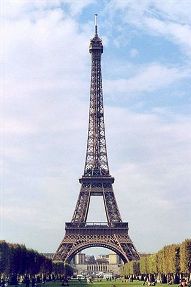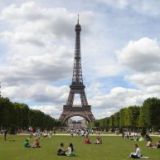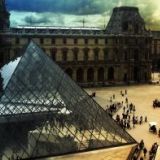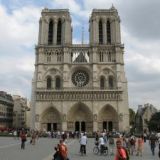Eiffel Tower Facts and History
Boning up on Eiffel Tower facts and history is a great way to prepare for your upcoming trip to France. Whether you are solely visiting Paris, the city of lights and romance, or whether you are planning to enjoy the French countryside, suntan on the beaches of the French Riviera, go skiing in the French Alps, or take a historic tour of the battlefields of Normandy, there is no lack of what to see and do in France.
A France travel guide and the Internet are two great resources which should be able to supply you with plenty of Eiffel Tower facts and history. Of course, you can always hire a tour guide when you arrive in France, or perhaps you are already traveling with a group. The experts agree, however, that doing some homework before you jet off to Paris, the Loire Valley, Versailles, Monaco, Burgundy, Marseilles, Cannes, Nice, Toulouse, or any other world-famous France destination allows you to appreciate the experience that much more and understand the significance of what it is you are seeing.
 Photo by: Lupo
Photo by: Lupo
A comprehensive list of Eiffel Tower facts and history could go on for days; however here are just a few items of Eiffel Tower trivia to get you started:
- The Eiffel Tower is located on the Champs de Mars near the River Seine
- The Eiffel Tower was designed by Alexandre-Gustave Eiffel (dubbed "the Iron Magician"), who also designed the Statue of Liberty
- The Eiffel Tower was initially built as a temporary structure for the 1889 Paris Exhibition, commemorating the 100th anniversary of the French Revolution
- Many Parisians did not appreciate the Eiffel Tower at first, claiming it didn't reflect the traditional style of France and threatening to tear the tower down and sell it as scrap metal
- The structure was spared from destruction when it was discovered that the tower could be used for communications
- Many weather-related and scientific studies have been conducted atop the tower, which today serves as a radio broadcast station and weather center
- The Eiffel Tower stands 1,063 feet tall (324 meters) and weights 10,000 tons
- There are three levels to the tower, two of which can be accessed on staircase by foot; to reach the third level one must take an elevator
- On a clear day, the view from the tower extends about 42 miles
- In 1930 the Eiffel Tower lost its title as the tallest structure in the world to the Chrysler Building
- Inside the tower, visitors can enjoy gift shops and two of Paris's finest restaurants, restaurant Altitude 95, overlooking the River Seine, and restaurant Jules Verne, named after the famous French author
- You can get to the Eiffel Tower by Metro, railroad, or bus
- The Eiffel Tower is open to the public 365 days a year, between the hours of 9:30 a.m. and 11:00 p.m.
Before you jet off to Paris, France, do some more research and see what other Eiffel Tower facts and history you can discover!









New! Comments
Have your say about what you just read! Leave me a comment in the box below.